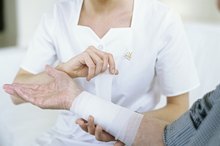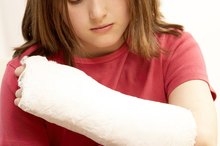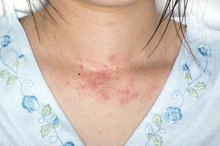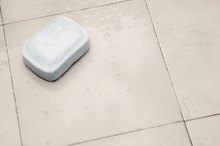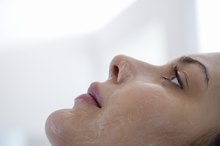How to Heal After using Efudex
Efudex (fluorouracil) is the leading skin treatment for actinic or solar keratoses–skin growths that can give rise to cancer if left untreated 1. Available in the form of cream or solution, Efudex is also important in treatment of slow-growing malignant tumors (superficial basal cell carcinoma) that might be found on the edges of the eyelids, lips or nostrils 1. The medication is usually applied to the effected area until the point where the old skin comes off or a lesion forms, and it is at around this time that your doctor will ask you to stop using Efudex 1. After the period of treatment, which usually lasts two to four weeks, you need another one to two months of healing. It is in this healing period that utmost care is needed to complement the effects of Efudex 1.
Instructions
Use an antibiotic called Mupirocin 2% and a corticosteroid Fluticasone Propionate 0.05%. These are two types of topical creams that doctors usually prescribe on the first and second days of healing after your Efudex treatment has been stopped 1. Mix and apply the two creams on the affected area two to three times daily, but preferably once after waking up and another one in the evening. During this time, expect your skin to crack and bleed and sting, and expect your eyes to swell.
How to Treat a Scab
Learn More
Use an analgesic such as Tylenol to reduce the pain from the fourth to sixth days of healing. Expect a more stinging pain, a bloody broken skin and severe itchiness on the affected part.
Apply sunscreen to protect the healing skin when you go out. Keep doing this at any point of the healing process if you think your skin will be exposed to sunlight. Expect a more severe pain accompanied by the cracking and flaking off of the damaged skin.
The Side Effects of Sudocrem
Learn More
Continue to have regular visits with the doctor to assess the progress and efficiency of your healing. During this time, the doctor might give you an estimate of when the healing is supposed to be completed and the medication stopped.
Keep applying the two creams (see Step 1) as your healing progresses. From the eighth to 10th days of healing, you will notice a certain dryness and tightness of the skin of the effected area, large flakes of old skin coming off after washing up, and pink skin appearing at the area.
Stop applying the two creams by the 12th to 14th day of healing. At around this time, the pain will have been greatly reduced, although the itchiness might remain.
Avoid putting any pressure on the newly growing pink skin at any point of healing. After around the 21st day, you will see a noticeable reduction in the pinkness of the new skin. The itchiness is expected to stop and the pinkness reduced by the 28th day. Everything will be back to normal by the 36th day, although some patients might recover completely on the 22nd day.
Tips
During the healing process, never use any cosmetics or other skin products. If ever you forget an application of the creams, simply resume application as prescribed by your doctor without increasing or doubling the dose. See the doctor after therapy for the complete assessment of your healing.
Warnings
Never apply any of the above medications (the two creams and the analgesic) unless prescribed by the doctor. Never try to cover the affected area with gauze or bandages unless it is recommended by your doctor. Totally avoid sun exposure or other forms of UV light during the healing process. Even after complete healing, make sure that you use sunscreen every day.
- Use an antibiotic called Mupirocin 2% and a corticosteroid Fluticasone Propionate 0.05%.
- From the eighth to 10th days of healing, you will notice a certain dryness and tightness of the skin of the effected area, large flakes of old skin coming off after washing up, and pink skin appearing at the area.
Related Articles
References
- PDR Health: Efudex
- U.S. National Library of Medicine MedlinePlus. Fluorouracil topical. Updated May 15, 2016.
- U.S. Food and Drug Administration. Efudex Prescribing Information. Valeant Pharmaceuticals.
- Lanoue J, Goldenberg G. Basal cell carcinoma: A comprehensive review of existing and emerging nonsurgical therapies. J Clin Aesthet Dermatol. 2016;9(5):26–36.
- Cleveland Clinic. Fluorouracil, 5-FU skin cream or solution.
- American Cancer Society. Local treatments other than surgery for basal and squamous cell skin cancers.
Tips
- During the healing process, never use any cosmetics or other skin products. If ever you forget an application of the creams, simply resume application as prescribed by your doctor without increasing or doubling the dose. See the doctor after therapy for the complete assessment of your healing.
Warnings
- Never apply any of the above medications (the two creams and the analgesic) unless prescribed by the doctor. Never try to cover the affected area with gauze or bandages unless it is recommended by your doctor. Totally avoid sun exposure or other forms of UV light during the healing process. Even after complete healing, make sure that you use sunscreen every day.
Writer Bio
This article was written by the CareerTrend team, copy edited and fact checked through a multi-point auditing system, in efforts to ensure our readers only receive the best information. To submit your questions or ideas, or to simply learn more about CareerTrend, contact us [here](http://careertrend.com/about-us).


